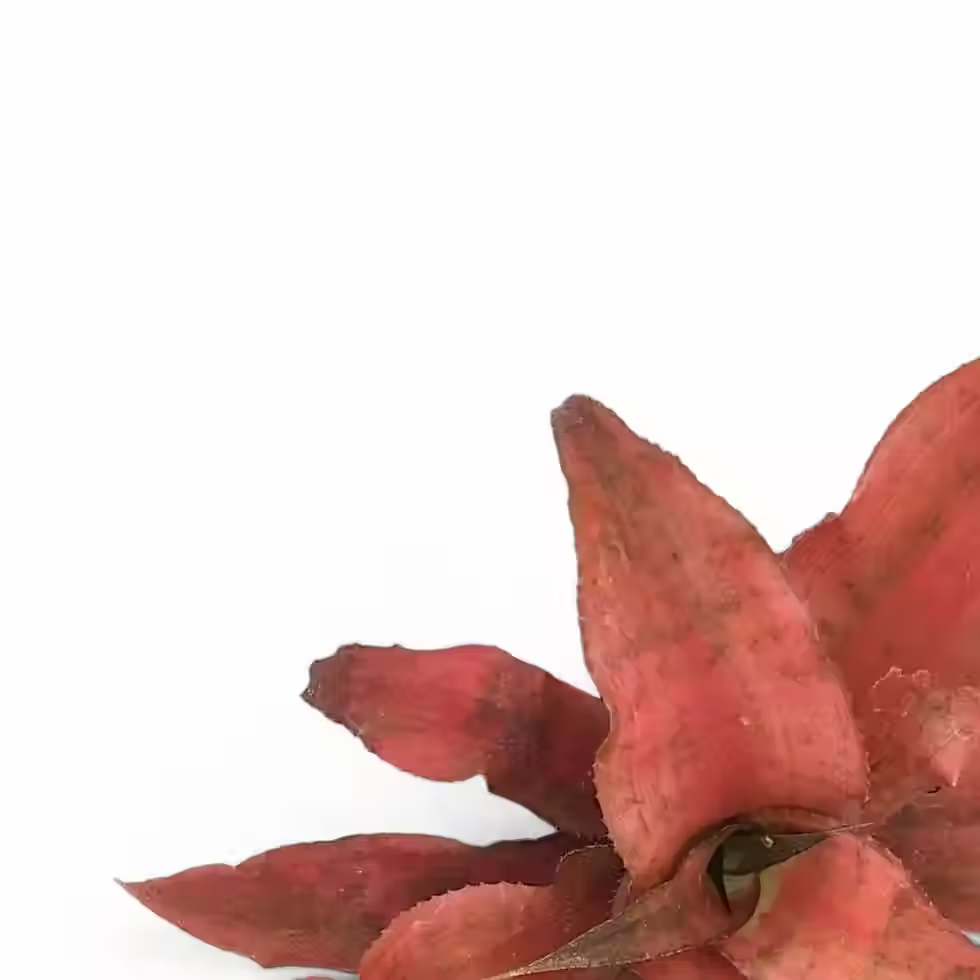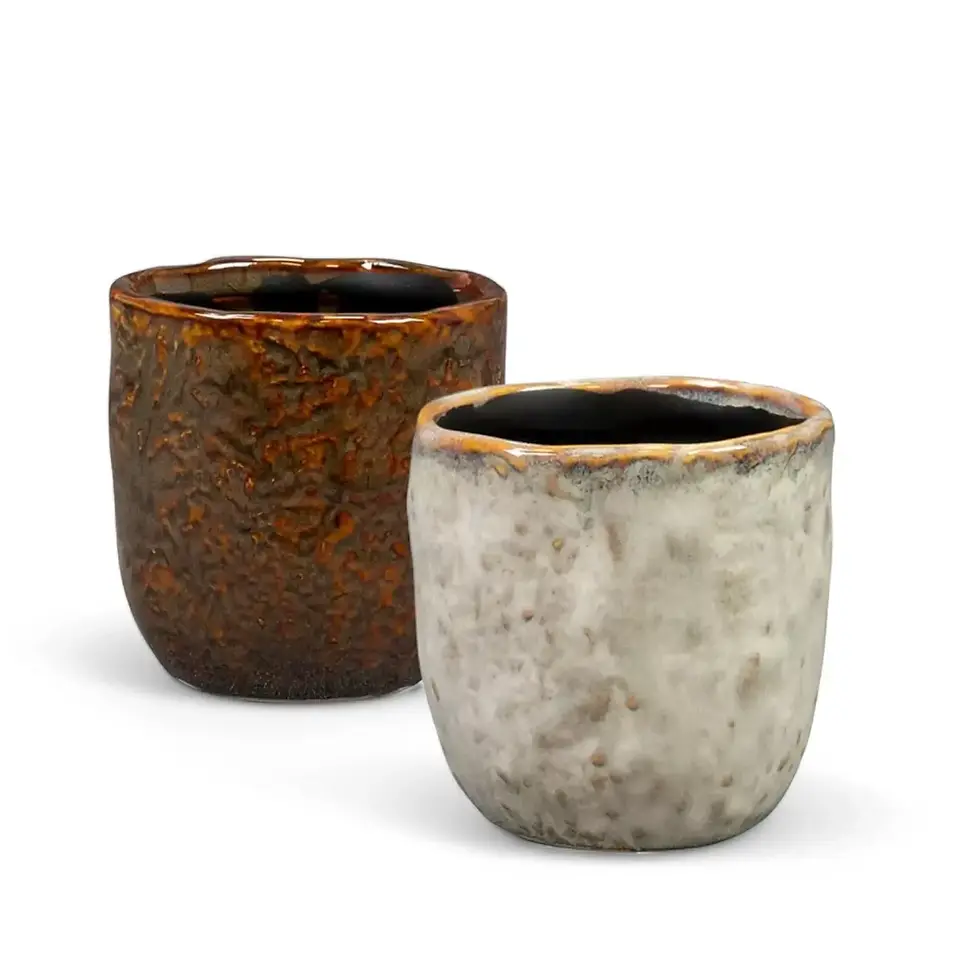Alocasia chaii - Rare Jewel Alocasia with Striking Features
Alocasia chaii is a treasure among houseplants, sought after for its unique appearance and robust character. This compact plant is a standout with its thick, leathery leaves that are almost succulent-like, showcasing a captivating pale matt grey hue on the upper side and a greenish-white underside. The broad, ovate-elliptic leaves, which are nearly peltate, form a striking, sculptural silhouette. Cultivated varieties can develop several leaves at once, up to 7, creating a lush, dense appearance. Adding to its allure, the pale green petioles are adorned with deep red spots and speckles.
Distinctive Characteristics of Alocasia chaii
- Compact Size: Reaches up to 40 cm in height, ideal for small spaces.
- Unique Leaf Texture: Thick, coriaceous leaves with an almost succulent feel.
- Stunning Petiole Details: Sturdy petioles marked by deep red speckles for a dramatic effect.
- Distinct Morphology: Features a persistent lower spathe that turns bright magenta at fruiting, distinguishing it from similar species.
Key Facts About Alocasia chaii
- Native Habitat: Found in the foothills of Sarawak, Borneo, thriving on steep, leaf-littered, red clay-loam slopes beneath a dense canopy in subtropical conditions. Humidity ranges from 60%-70%, with temperatures between 9°C and 31°C.
- Growth Rate: Moderate, with new leaves emerging every few months under ideal care.
- Toxicity: Alocasia chaii contains calcium oxalate crystals and is toxic to pets and humans if ingested.
- Lifecycle: A robust perennial, part of the Alocasia scabriscula group, known for its leathery, subsucculent foliage and unique floral structures.
Caring for Alocasia chaii
- Light: Prefers bright, indirect light to maintain its striking leaf coloration. Avoid direct sunlight, which can scorch the leaves.
- Watering: Allow the topsoil to dry out slightly between waterings. Ensure a well-draining soil mix to prevent root rot.
- Humidity: Requires moderate to high humidity. Use a humidifier or group plants together to create a more humid microclimate.
- Temperature: Thrives in temperatures between 18°C and 26°C. Protect from drafts and sudden temperature drops.
- Soil: A loose, well-draining mix rich in organic matter is ideal. A mix of coco coir, perlite, and bark works well for this plant.
- Repotting and Pot Choice: Repot every 1-2 years to accommodate its growing rhizome. Use a pot with drainage holes to prevent waterlogging. Opt for a pot size that provides enough space for root expansion.
- Fertilization: Feed with a balanced liquid fertilizer every 4-6 weeks during the growing period for optimal growth. Avoid over-fertilizing to prevent salt buildup.
- Propagation: Best propagated through division of the rhizome during repotting. Ensure each division has at least one healthy leaf and root system.
- Semi- and Hydroponics: Adapts well to semi-hydroponic setups using inert substrates and a hydroponic nutrient solution. Regularly flush the system to avoid mineral buildup.
- Pruning: Trim damaged or dying leaves to maintain the plant's health and appearance. Remove old foliage near the base to encourage fresh growth.
- Placement: Place in a spot with bright, indirect light and consistent humidity. Avoid placing it near air conditioners or heaters.
- Air Circulation: Ensure good air circulation around the plant to prevent fungal issues and pest infestations.
- Support Needs: While naturally compact, older stems may benefit from gentle support to keep the plant upright and prevent leaning.
Common Concerns and Remedies
- Pests:
- Spider Mites: Often appear in low-humidity environments. Increase humidity and use neem oil or insecticidal soap for treatment.
- Mealybugs and Thrips: Remove manually or treat with a systemic insecticide for severe infestations.
- Root Rot: Prevent by using well-draining soil and avoiding overwatering. If signs of rot appear, trim affected roots and repot the plant in fresh soil.
- Leaf Discoloration:
- Yellowing Leaves: Usually a sign of overwatering. Check the soil’s moisture level before watering.
- Browning Tips: Indicates low humidity. Increase humidity levels or check for fertilizer salt buildup in the soil.
- Fungal Issues: Black spots or mold on leaves can result from excessive moisture. Remove affected leaves and ensure good airflow around the plant.
- Drooping Leaves: Often caused by insufficient light or inconsistent watering. Adjust care accordingly.
- Nutrient Deficiency: Pale or weak leaves may indicate insufficient fertilization. Ensure regular feeding during active growth.
Fascinating Facts About Alocasia chaii
This species is part of the Alocasia scabriscula group, known for its leathery, peltate leaves. Its distinctive magenta-colored fruiting spathe is a rare feature among Alocasias, making it a botanical curiosity. The plant was named after Dr. Paul P.K. Chai, a prominent botanist from Sarawak, who contributed significantly to the study of tropical flora. Interestingly, this plant has adapted to steep, clay-loam slopes in its native habitat, showcasing its resilience and ability to thrive in challenging conditions.
Etymology of Alocasia chaii
The genus name, Alocasia, derives from Greek, combining "a-" (without) and "Colocasia," a related genus. The species name honors Dr. Paul P.K. Chai, who collected the first specimen in Sarawak, Borneo. It was formally described in 2007 in the Garden Bulletin of Singapore.
FAQs About Alocasia chaii
- Can Alocasia chaii grow in low light? While it tolerates low light, bright, indirect light ensures healthier growth and vibrant leaf coloration.
- How fast does Alocasia chaii grow? Growth is moderate, with new leaves appearing every few months under optimal care.
- How do I increase humidity for Alocasia chaii? Use a humidifier or place it near other plants to create a humid microclimate. Avoid misting to prevent fungal issues.
Order Alocasia chaii and bring home a rare botanical masterpiece!
Alocasia chaii
You will receive the plant in the pictures. If there are more options available, please select one to see the relevant plant pictures.
If you require Additional Informationrmation, details or photos of a particular plant, please don't hesitate to contact us, we are happy to help.
The first picture is always a representative picture.

























































